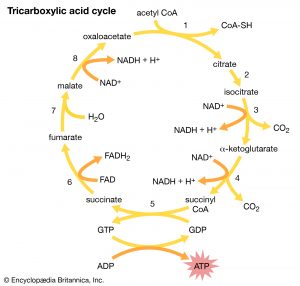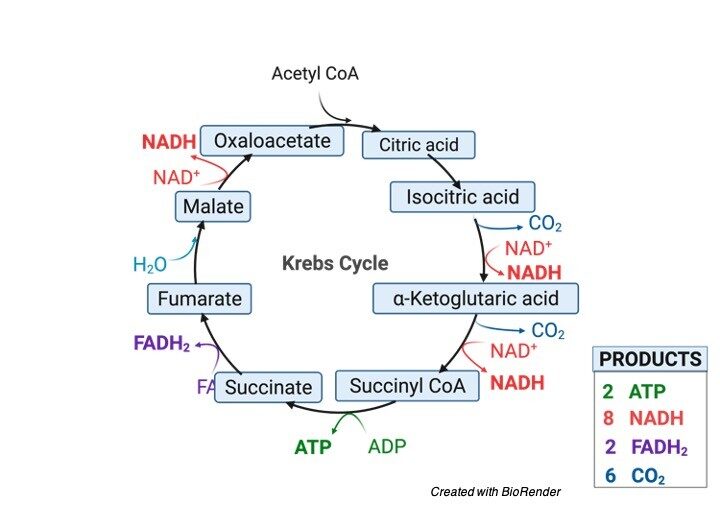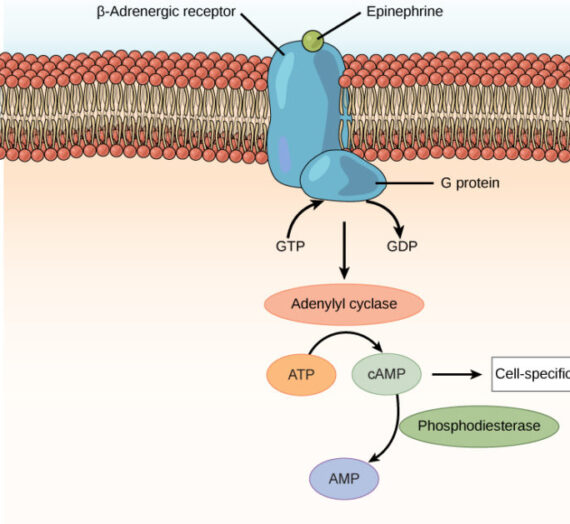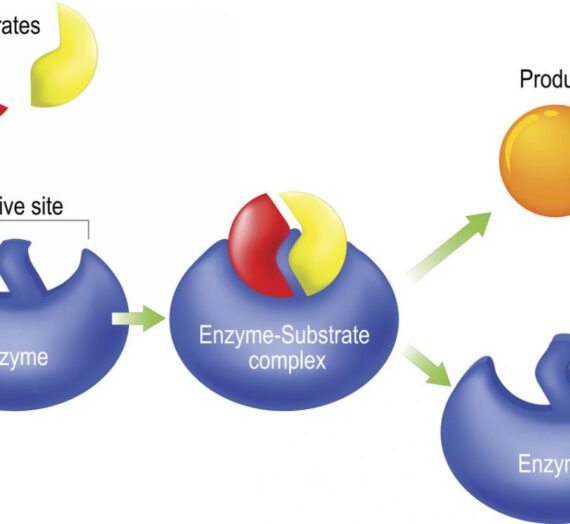The Krebs cycle: harnessing chemical energy for cellular respiration
The tricarboxylic acid (TCA) cycle, also known as the Krebs or citric acid cycle, is the main source of energy for cells and an important part of aerobic respiration. The cycle harnesses the available chemical energy of acetyl coenzyme A (acetyl CoA) into the reducing power of nicotinamide adenine dinucleotide (NADH). The TCA cycle is part of the broader glucose metabolism in which glucose is oxidized to form pyruvate, which is then oxidized and enters the TCA cycle as acetyl-CoA.
Half of the intermediates on which the cycle depends are also the origin of pathways that lead to important compounds such as fatty acids, amino acids, or porphyrins. If any of these intermediates deviate like this, the integrity of the loop is broken and the loop stops working. Essential energy production can only be resumed if the bypassed intermediate or a subsequent intermediate leading to oxaloacetate can be replenished by anaplerotic (stuffing) reactions.
Intermediates Of The Krebs Cycle
- Citrate
- isocitrate
- Oxoglutarate
- Succinyl-CoA
- succinate
- fumarate
- malate
- Oxaloacetate (oxaloacetic acid)
Steps Of The Krebs Cycle
- The TCA cycle begins with an enzymatic aldol addition reaction of acetyl CoA to oxaloacetate, forming citrate.
- Citrate is isomerized by a dehydration-hydration sequence to produce (2R,3S)-isocitrate.
- Further enzymatic oxidation and decarboxylation give 2-ketoglutarate.
- After further enzymatic decarboxylation and oxidation, 2-ketoglutarate is converted to succinyl-CoA.
- Hydrolysis of this metabolite to succinate is coupled to phosphorylation of guanosine diphosphate (GDP) to guanosine triphosphate (GTP).
- Enzymatic desaturation by flavin adenine dinucleotide-dependent succinate dehydrogenase (FAD) produces fumarate.
- After stereospecific hydration, fumarase-catalyzed fumarate is converted to L-malate.
- The last step of the NAD-coupled oxidation of L-malate to oxaloacetate is catalyzed by malate dehydrogenase and closes the cycle.
Where Does The Hydrogen In 4(NADH+H+) And UQH2 Come From?
The reducing power at this stage is largely conserved as NADH and ubiquinol (UQH2) in the inner mitochondrial membrane before a series of oxidation reactions that end in water. These oxidations enhance the translocation of protons from the matrix to the intermembrane space. This leads to a potential gradient (proton pump) that drives the back location of protons to the matrix and thus activates ATP synthase, which catalyzes the formation of ATP.

Where Does The Krebs Cycle Take Place?
The TCA cycle was first observed in the muscle tissue of a pigeon. It occurs in all eukaryotic and prokaryotic cells. In eukaryotes, it occurs in the matrix of the mitochondria. In prokaryotes, it takes place in the cytosol.
Krebs Cycle Products
Before the Krebs cycle begins, a glucose molecule must be converted to acetyl-CoA. This process produces 2 molecules of acetyl-CoA to fuel the cycle. Thus, the cycle proceeds twice per original glucose, producing twice the products shown below.
A TCA cycle “turn” produces 7 products:
- GTP
- 3 NADH
- FADH2, which is converted to UQH2 in the presence of coenzyme Q (ubiquinone)
- 2 CO2 (carbon dioxide)
What Is Pyruvate?
Pyruvate is a biological molecule and a product of glucose metabolism that reacts with adenosine triphosphate and carbon dioxide, converting it to acetyl-CoA and adenosine diphosphate (ADP) at the beginning of the TCA cycle. It is often included in the introductory or preliminary step of the cycle. Pyruvate is usually derived from pyruvic acid, a product of glycolysis, which rapidly dissociates in most natural systems, leaving pyruvate. Pyruvate plays an important role in multiple biotransformations, as explained in more depth in the Pyruvate Transformations article.
History Of The Krebs Cycle
The discovery of this cycle by the German chemist Hans Adolf Krebs in 1937 marked a milestone in biochemistry. Krebs received the Nobel Prize in Physiology or Medicine in 1953 for this contribution to the study of intermediary metabolism in the oxidative breakdown of carbohydrates. Krebs and co-author William Arthur Johnson published their findings “The Role of Citric Acid in Intermediate Metabolism in Animal Tissues” in Enzymologia after being rejected by Nature. That original post was followed by many more.
The TCA Cycle In Research
The TCA cycle is of particular interest to researchers in the field of metabolomics. By studying the rates, by-products, enzyme activity, and other qualities of metabolism processes, researchers can draw conclusions about diseases and investigate the efficacy of therapies.
Key Enzymes Of The TCA Cycle
- malic dehydrogenase
- α-ketoglutarate dehydrogenase
- citrate synthase
- Fumarase
- aconitase
TCA Cycle Applications
These TCA-related metabolic applications are commonly studied using stable isotope-labelled compounds and mass spectrometry:
- lipid metabolism
- amino acid metabolism
- Protein metabolism (turnover)
- glucose metabolism
- Waste of energy
- metabolomics
We sell TCA metabolites and enzymes to identify metabolic processes, as well as stable isotope-labelled compounds that can help measure rates of whole-body metabolism or glucose metabolism. Stable isotope-enriched compounds are metabolically similar to natural homologues, making them safe to use as tracers.



